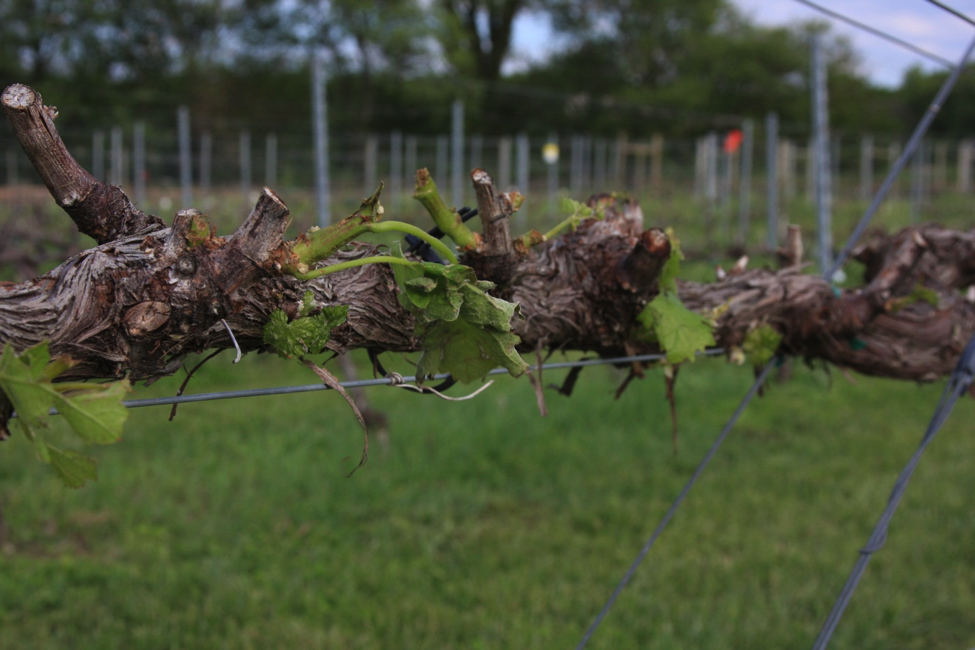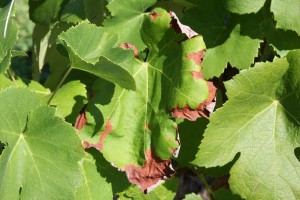If you were hit by a hailstorm on May 22nd, as we were at RAREC, you are probably making some hard decisions on what to do in the vineyard.

Hail-damaged cordon on a grape vine at Rutgers Agricultural Research and Extension Center. Shoots, leaves, and flower buds were severely damaged and most shoots were broken off.
Removal of dead and compromised leaves and flower clusters will help reduce development of fungal pathogens.
Stem wounding will be a big concern especially for vineyards with crown gall. Treatments that aid in wound healing or have bactericidal effects may provide some help. However, shoots severely damaged by hail may need to be pruned out.
New growth will continue to push as weather conditions allow. This new growth should be protected against black rot, powdery and downy mildews as you would in any other year.

